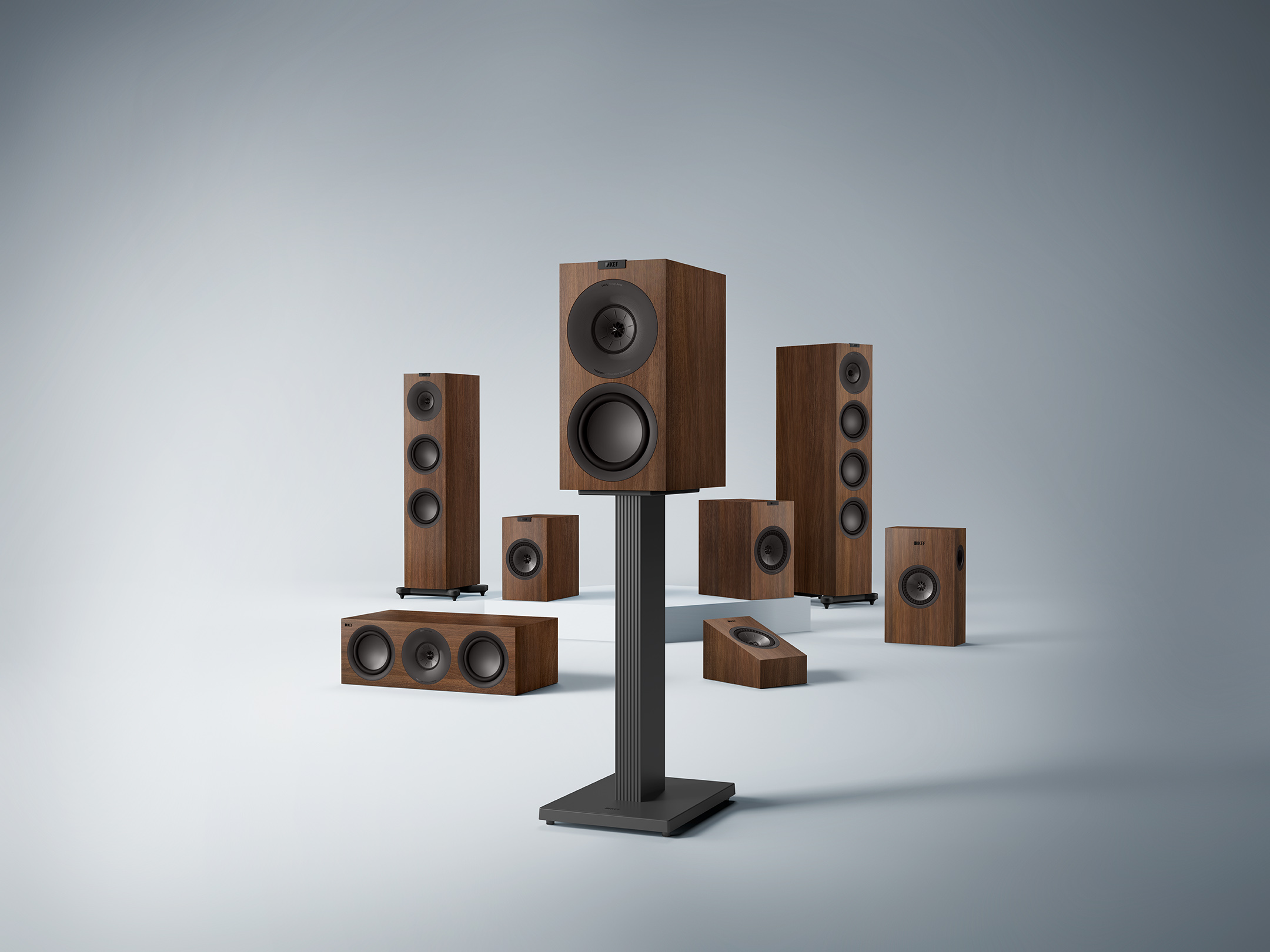You might say we’re at peak home audio and theater technology. With all of the wonderful current technology at our disposal also comes a level of complexity home audio enthusiasts back in the day never really had to deal with. Although two-channel audio, with or without a subwoofer or two, is still a classic and extremely viable way to listen to music, there are so many options for home audio enthusiasts it can sometimes be daunting to understand the differences between products and formats.


You can find the deep-dive tech stuff on every manufacturer’s website or throughout the digital universe, but what seems to be lacking is a very basic comparison of formats. So, without diving too deeply into the tech aspects, let’s try to clear up the difference between 5.1 (or 7.1 etc.) surround sound and Dolby Atmos.
Dolby Surround and its friendly competitor DTS (Digital Theater System) are digitally encoded and compressed audio technologies that allow for surround sound using systems composed of five or more fixed channel surround speakers. The first number in the system designation denotes the number of speakers used including the front left, center and right speakers. A surround system designated as ‘5.1’ means there are five speakers in the system, the three fronts and two rear, or surround, speakers. This size system is the most common for home theater installations, but it’s easy to add up to 11 speakers for height, sides, etc.
The ’.1’ denotes the number of subwoofers, or increasingly common the number of LFE (Low Frequency effects) channels – basically the subwoofer channels.
Dolby Surround and its friendly competitor DTS (Digital Theater System) are digitally encoded and compressed audio technologies that allow for surround sound using systems composed of five or more fixed channel surround speakers. The first number in the system designation denotes the number of speakers used including the front left, center and right speakers. A surround system designated as ‘5.1’ means there are five speakers in the system, the three fronts and two rear, or surround, speakers. This size system is the most common for home theater installations, but it’s easy to add up to 11 speakers for height, sides, etc.
The ’.1’ denotes the number of subwoofers, or increasingly common the number of LFE (Low Frequency effects) channels – basically the subwoofer channels.
Your surround processor will matrix the number of channels you are using with the number of channels in the mix. In regular terms, that means don’t worry about those kinds of details after you set up your processor, the electronics will take care of what signal goes where.
There is no special magic between Dolby Surround/DTS and Dolby Atmos except the simple fact that technology has advanced a ton since the early 1980s.
With a Dolby Atmos mix, the channels are mixed spatially and the processor determines what sounds go where, depending on the number of available speakers. The major difference is, with Dolby Atmos the processor is capable of working with up to 24 speakers on the floor (fronts, surrounds, sides) and up to 10 overhead speakers, commonly referred to as height speakers in standard surround systems. This allows for very precise positioning of sounds within the sound stage. In an Atmos mix the floor and ceiling speakers (notice I didn’t say ‘height’) work in tandem with each other to pin-point the location a sound comes from. Obviously, the more speakers you have, the more precise the location in the playback.
A Dolby Surround/DTS mix with height speakers can give the listener a general sense of an object, say a helicopter, flying overhead from left front to right rear for example, but a properly tuned Atmos system can give the listener an immersive experience of the same helicopter flight. A great example of a a fantastic Dolby Atmos mix in a properly set-up system is the orchestra during the vocal performances in the movie ‘The Greatest Showman.’ The channels are mixed in such a way that they actually place the orchestra in the orchestra pit which means it sounds like its coming from below the front left, right and center speakers! This is only possible because of the precise spatial mixing possible with Atmos. Because of this, it’s also more critical to have your ‘surround’ speakers at the same level of quality as your fronts and center.
Dolby Surround/DTS mixes do the same thing as Dolby Atmos mixes, Dolby Atmos just does the job with more precision, clarity and finesse because of its use of modern mixing and processing technology. The end result for the listener? An actual immersive experience for all your senses!
There is no special magic between Dolby Surround/DTS and Dolby Atmos except the simple fact that technology has advanced a ton since the early 1980s.
With a Dolby Atmos mix, the channels are mixed spatially and the processor determines what sounds go where, depending on the number of available speakers. The major difference is, with Dolby Atmos the processor is capable of working with up to 24 speakers on the floor (fronts, surrounds, sides) and up to 10 overhead speakers, commonly referred to as height speakers in standard surround systems. This allows for very precise positioning of sounds within the sound stage. In an Atmos mix the floor and ceiling speakers (notice I didn’t say ‘height’) work in tandem with each other to pin-point the location a sound comes from. Obviously, the more speakers you have, the more precise the location in the playback.
A Dolby Surround/DTS mix with height speakers can give the listener a general sense of an object, say a helicopter, flying overhead from left front to right rear for example, but a properly tuned Atmos system can give the listener an immersive experience of the same helicopter flight. A great example of a a fantastic Dolby Atmos mix in a properly set-up system is the orchestra during the vocal performances in the movie ‘The Greatest Showman.’ The channels are mixed in such a way that they actually place the orchestra in the orchestra pit which means it sounds like its coming from below the front left, right and center speakers! This is only possible because of the precise spatial mixing possible with Atmos. Because of this, it’s also more critical to have your ‘surround’ speakers at the same level of quality as your fronts and center.
Dolby Surround/DTS mixes do the same thing as Dolby Atmos mixes, Dolby Atmos just does the job with more precision, clarity and finesse because of its use of modern mixing and processing technology. The end result for the listener? An actual immersive experience for all your senses!

By Jack Sharkey for KEF



